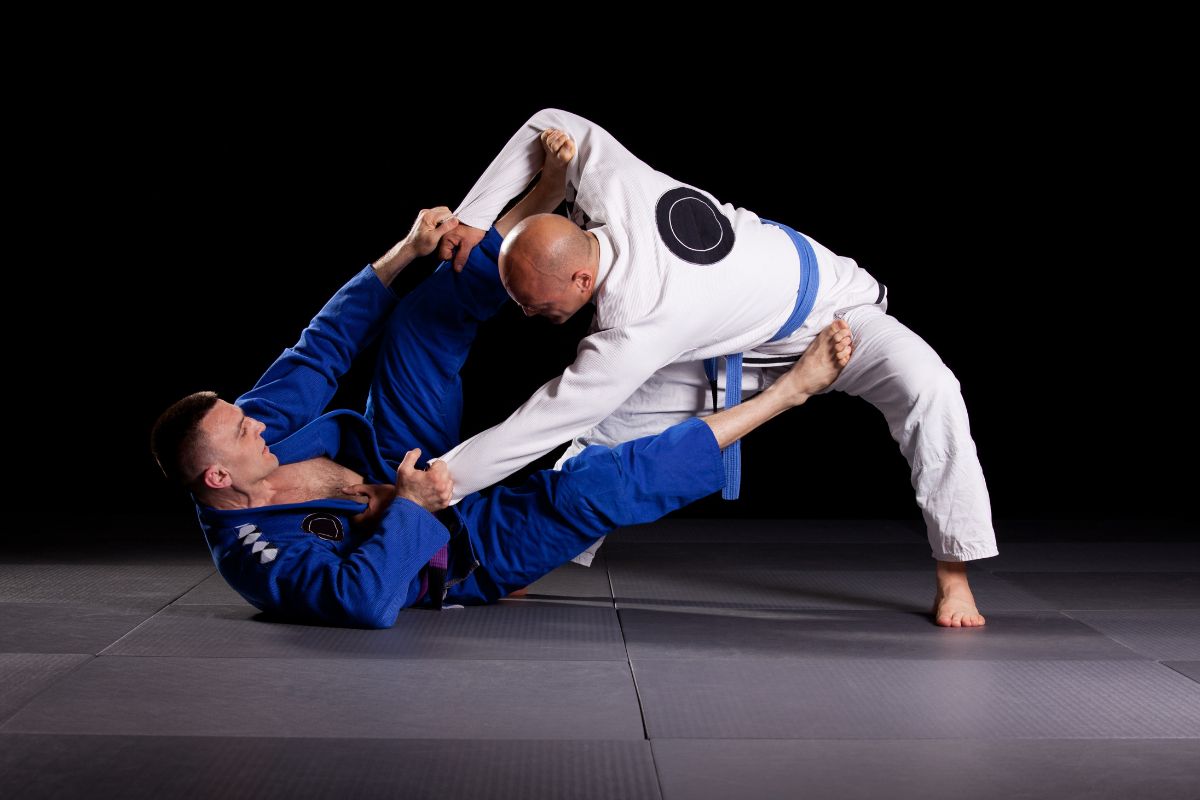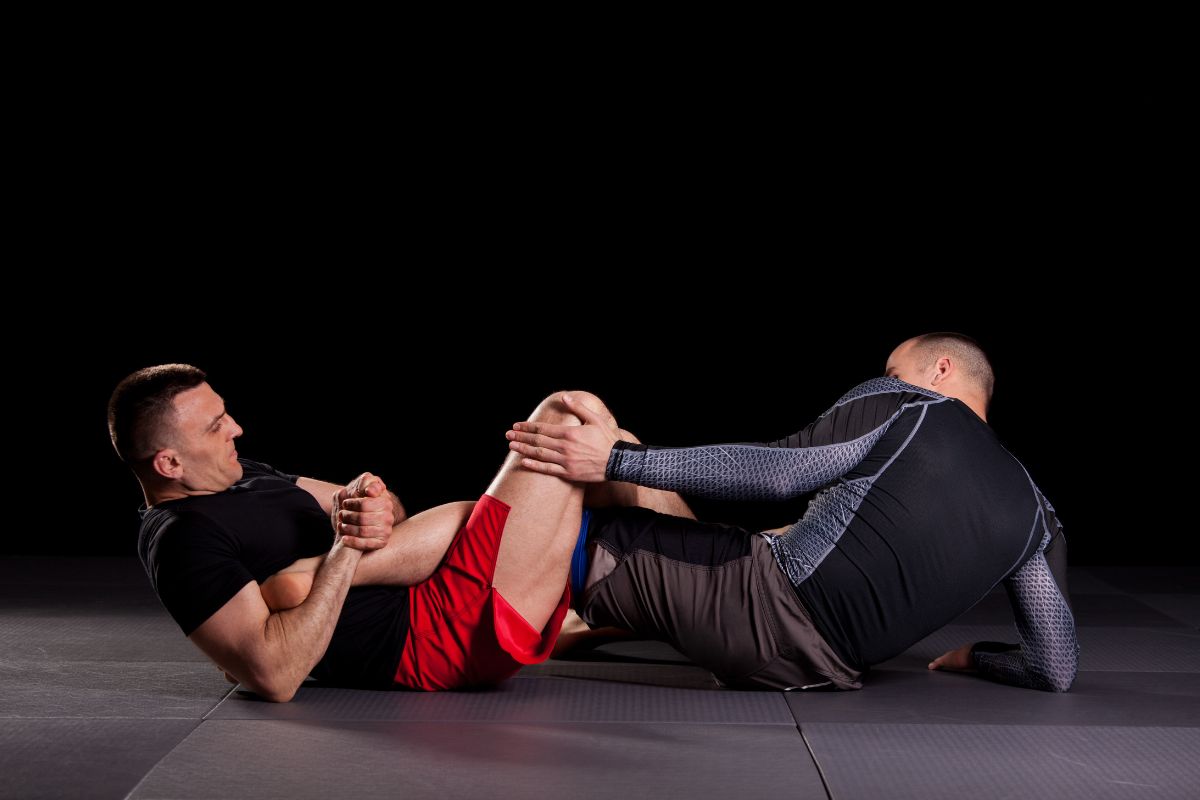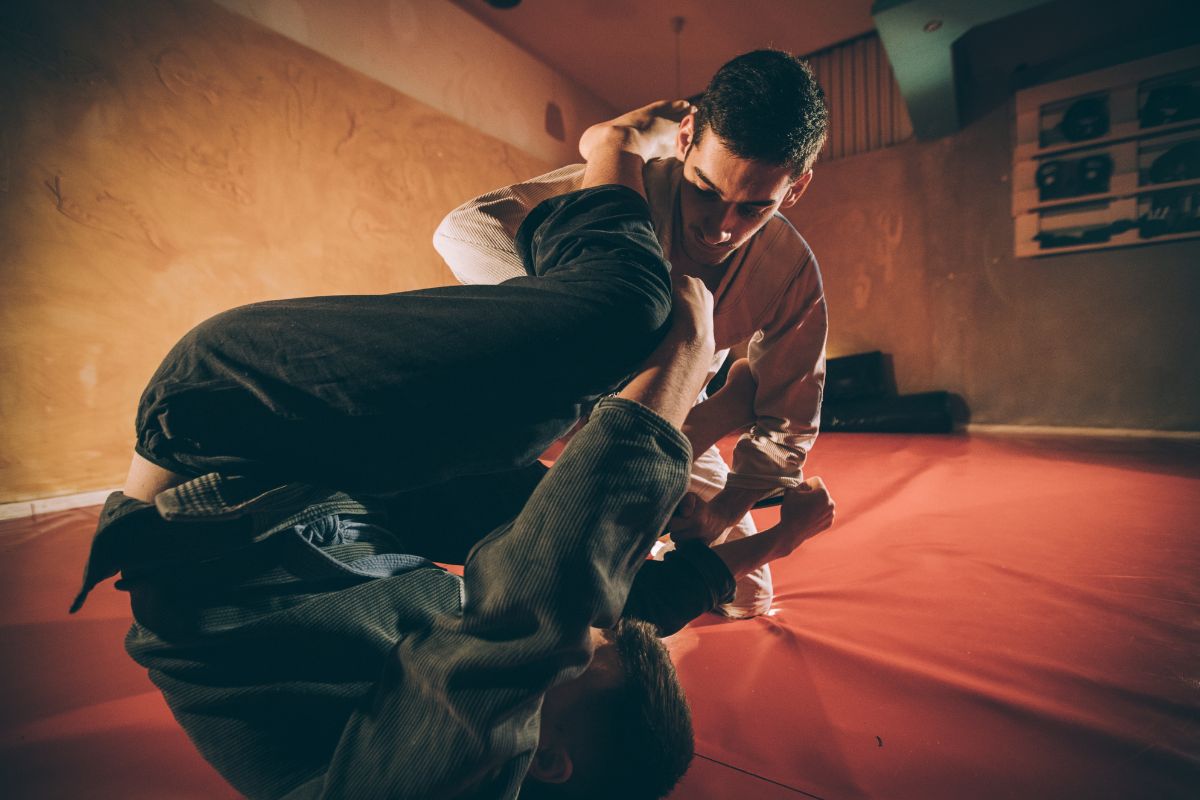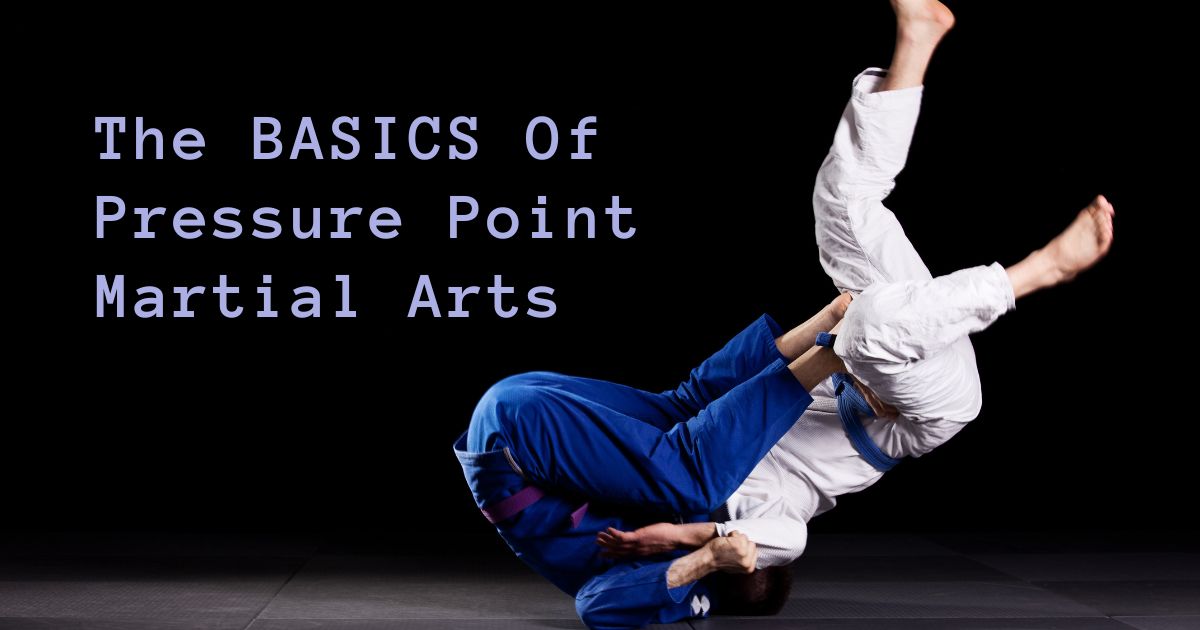What are Pressure Points in Martial Arts?
The idea of pressure point martial arts has oriental roots and has nothing to do with contemporary Western culture. It has roots in martial arts and traditional Asian medicine.
Areas on the human body that, when handled in a particular way, can cause a great deal of discomfort or other effects are pressure points. When it comes to martial arts, history doesn’t record when or where pressure points first appeared.
How Many Pressure Points are in the Human Body?
After that, the pressure spots (Varmam) on the body adjust to either heal the patient or inflict damage, depending on the circumstances. The therapeutic application, referred to as vaidhiya Murai, is a modern time component of traditional Siddha Medicine (Siddha vaidyam).
Varma adimurai, or “pressure-point hitting,” uses pressure points in combat. You can do it with or without a weapon. The strikes target the sensitive parts of the body in Varma Kalai.
Another theory claims that the first person to create a fighting method based on pressure points of the body was the samurai Minamoto no Yoshimitsu (really Yoshimitsu Minamoto, but spelled as previously due to linguistic customs). The Japanese journal Shin Budo presented this notion in one of its issues from 1942.

A List of Pressure Points for Self-Defence
The human contains approximately 350 pressure points; however, you can utilize only a tiny percentage of those for self-defense. There are a lot of pressure points positioned around joints in the body, and the knees are one of the greatest illustrations of this. The following is one example of a general distinction between pressure points:
- Touchpoints: Despite their name, touchpoints require more than a light touch to activate them—though you don’t need to apply much pressure; They are best described as pressing points because you must push them for them to work;
- Rub points: Are pressure points that maintain their literal meaning and don’t require a lot of pressure from the practitioner; all you need to do is correctly rub the place in question.
- Strike points: Are essential for fighting and defending oneself, which is why they are also the most dangerous and require more force than the others to use successfully.
Can You Paralyze Someone, Using Pressure Points?
There is no way, under any circumstances, that you will be able to use pressure spots on a person’s body to efficiently murder or paralyze them. It is only a myth in folklore and popular culture, especially in China and Japan, yet, these two cultures are the most likely to have it.
These methods are effective in the arts, where you utilize them to create particular dramatic effects; nevertheless, they are not present in real life.
This is especially true for the martial arts technique known as the “touch of death” (also known as dim mak), which can kill a person without force by applying pressure to specific pressure spots.
Although the dim mak has been the subject of numerous allegations over the years, it has never been successfully confirmed or scientifically proven, even though it is a very popular concept in works of fiction like anime, manga, television, and cinema.
Even though it is theoretically conceivable to cause severe injury or even death to another person during a brawl, this has nothing to do with pressure points or the so-called “touch of death.” To accomplish this, you will need to use a significant amount of power and strike some of the more susceptible areas of your adversary’s body.
The same is true for paralysis; you will not be able to paralyze your opponent even if you manage to temporarily immobilize them with a well-placed shot (like one to the liver, for example).
How to Paralyze Someone for a Short Time
There are several options available. However, you wouldn’t even think of trying to truly paralyze someone unless there was a reason that could endanger their lives or the fight was particularly intense.
- Strike the area around the solar plexus: You can find it in the abdominal region. If you hit someone in that spot, it will knock the wind out of their lungs and cause them to tumble. You, too, will be unable to move.
- Aim for the liver: Although it is a more difficult goal overall, it is more efficient.
- You might even attempt to rupture any of the ligaments or break some of the bones. A simple stomp on the ankle can easily tear the ligaments in the ankle or possibly cause damage to the Achilles tendon. A kick to the knee can either tear or lock the ligaments, which can occasionally cause the ligaments to become permanently damaged.
- The neck vertebrae, specifically –Found near the top of the spinal cord, at the base of the skull, and at the back of the neck. If you strike someone with this high enough velocity and with sufficient force, you can permanently disable or even kill them. You should not use this if your life is not in immediate danger.
As mentioned before, you should only use these if you must do so and you have no other choice.

What is Pressure Point Fighting?
The art of fighting with pressure points, also known as pressure point fighting, is a style of fighting that focuses on exploiting your opponent’s pressure points to gain an advantage over them.
What happens when you strike a pressure point in someone else’s body? It can create extreme, excruciating pain depending on the contact location and how you apply it. It can leave you stunned, throw off your equilibrium and motor skills, and slow down your reflexes.
This also reflects the repercussions of striking a pressure point, including motor dysfunction, balance dysfunction, involuntary muscular spasms, disorientation, drooling, and even loss of consciousness. You can bring on these symptoms by pressing on a pressure point.
However, paralysis and death are not among the possible consequences of hitting pressure points. These are just some of the potential outcomes. The three primary methods of pressure point fighting known to modern martial arts are as follows:
- Combat based on pressure points and the use of pain to elicit submission.
- Fight based on pressure points that are dependent on the flow of blood
- Fight based on pressure points and using impact as the primary weapon
You will realize that each tactic highlights a unique aspect of the issue. Given this shared consideration, the results of implementing each plan are distinctly different (e.g., using techniques that focus on blood flow might easily cause your opponent to lose consciousness).
To describe the basic pressure points involved in this battle, you have various instruments at your disposal. The best pressure spots to concentrate on are the ones listed below:
- The back of the neck: is a very sensitive area with numerous neurological structures and glands, all of which play a significant role in our bodies; the location of the spine and the balance-control center highlights how dangerous that area is as well as how useful it can be if you find yourself in a sticky situation..
- Behind the head: The back of the skull is particularly sensitive since it is home to numerous nerves and glands.
- Chin: like the jaw, the chin is a particularly fragile place that will be excruciatingly painful to strike. This is all because of the connections it has to your nose, which is a painfully sensitive area, your skull, your mouth, and your teeth, all of which are frequently painfully sensitive..
- Ears: If you are not wearing a helmet, there is a considerable likelihood that your ears will be at risk. Fortunately, few people are aware of the fact that the ears are a particularly sensitive, weak place that can cause not only substantial pain but also induce certain neurological issues..
- Eyes: as the eyes are nearly always open and extremely sensitive, a successful strike to even one of them can greatly reduce your opponent’s strength by inflicting severe pain and impairing his ability to see (and, as a result, defend himself successfully).
- Nose: although hitting your nose properly won’t cause you to pass out, it is one of the more painful experiences a person may have, even if they avoid the bad repercussions of having a bleeding or broken nose..
- Temple: this part of our skull is very sensitive and is among the most painful pressure points. It can lead to bleeding, migraines, and even loss of consciousness if they strike you in the right place with a well-placed shot. Thus you need to guard this area.
- Throat: We utilize our throats to chew our food and to breathe. If a good neck shot has the potential to hurt a lot, it probably will. This is a crucial pressure point to concentrate on because you don’t want to feel like you’re choking and having trouble breathing.
A List of Knockout Pressure Points
This is a fairly popular term used in martial arts, and pressure points conflict in particular; however, the definition of such pressure points needs clarification. Both descriptions are partially accurate. Intensity is what sets them apart.
More specifically, some karate practitioners believe that knockout pressure points only need to create moderate dizziness in their opponent. In contrast, others maintain that this level of dizziness is essential.
However, you can find the truth in another place. Because of this, you should keep your hopes high about the effectiveness of knockout pressure points; despite their name, they only sometimes result in the knocking out of an opponent.
You’ll need to rely on the skills you learned from traditional martial arts if you want to get out of sticky circumstances because they are, for the most part, absolutely useless in real-life scenarios and for self-defense.
Regarding self-defense, the only true knockout pressure point can rapidly and efficiently knock out one’s opponent. However, such movements are relatively uncommon when fighting pressure points.
To get the effect you want, you need to be powerful, precise, and accurate, and you must strike the target where it hurts the most. Because they are extremely uncommon, there are just two strategies that you can use in this circumstance:
Impact pressure fighting, because the force of the shot (whether it be with your limbs or with a weapon) will lead to an immediate loss of consciousness due to the large force in question, and; Blood flow pressure fighting because reducing the blood flow to the brain leads to loss of consciousness, but you need skills to make such moves (for example, chokes, holds, etc.) successfully in a real-world situation.
Techniques of Dim Mak: Martial Arts Self-Defense Secrets Revealed [Dim Mak Techniques]
Did you know that Dim Mak martial arts practitioners used pressure points as self-defense against larger or more powerful opponents in ancient times? In this method, they could achieve maximum effect with the least amount of power necessary for self-defense. If you practice martial arts or engage in self-defense, you, too, can achieve this level of power.
This indicates that you can resist a larger opponent and even counter an attack that targets one of your pressure points. In addition, you will improve your talents and challenge yourself to perform at a higher level in your martial arts training.
Before we begin, an essential reminder, this technique, like all ancient forms of martial arts, is not about violence or aggressiveness; rather, it is about the individual’s growth as a person in all aspects of their being, including mind, body, and spirit, as well as preserving the highest possible level of physical and mental health.
It is about improving our talents to compete at a higher level in martial arts. The art of dim mak pressure points applies the lowest power needed to get the desired effect. This power is available to you. How dim mak pressure points can save your life one day
Your strength will improve by at least ten times if you use Dim Mak. Dim Mak instructed martial arts pupils in dim mak pressure points to improve their effectiveness during self-defense and reduce the force they needed to use when protecting themselves. This allowed students to avoid the need to resort to more extreme measures.
A significant number of them had short statures and were of advanced years. When they defended themselves against attackers who were significantly larger and stronger than they were, Dim Mak enhanced their power by a factor of 10 or more.
They could avoid danger and stay alive because of this increased power. When it comes time for you to defend yourself, you, too, could want further assistance.
Therefore, you need to be familiar with pressure points. You will no longer kick or punch without purpose once you have this information; instead, you will move so that you can strike or seize vital pressure points with accuracy.
You’ll end savage attacks very quickly, making you much safer when you’re out on the street. Because you won’t have to rely on raw physical strength as much, all your techniques will improve in terms of their strength, precision, and power. In addition, your martial arts training will become more graceful and genuinely pleasurable.

Final Words
When used correctly, pressure and vital points in various martial arts techniques can benefit the practitioner considerably. When struck or otherwise manipulated in a particular manner, these spots can cause substantial pain and other effects.
Martial artists frequently incorporate these points into their techniques to assist in the submission of an adversary. Hapkido, Aikido, Jujutsu, Karate, Kyusho Jitsu, and some Kung Fu schools are well-known martial arts that use pressure points in their techniques.
Only roughly a third of the body’s pressure points, also known as acupoints, are in most martial arts methods, even though there are more than 300 pressure points (acupoints) placed on the numerous meridians throughout the body.

